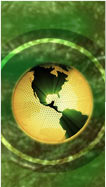Copyright is a form of intellectual property protection for creative works of authorship when reduced to tangible form. Fundamental concepts of copyright are:
1. Protects expression not idea
2. Functional articles cannot be protected
3. Protected works can include literary and visual works of art, sound and visual recordings, software, performed arts
4. Copyrights can be registered but attach as a right of the author upon creation. Registration and deposit with library of congress is defined in U.S.C. title 17.
5. Marking/notice of copyright is no longer required under U.S. law but can be used to enhance the copyright owner’s rights in the work (works created before 1988 were required to be marked with a copyright notice).
6. Ownership of a copyright rests with the author unless assigned or licensed. If a work is created by an employee, the “author” is the employer.
7. Term of copyright
a. Created after 1978, life of the author plus 70 years (Visual works attribution and integrity effective for the life of the author)
b. Works for hire 95 years from first publication or 120 years from creation
8. Transfer of ownership or license rights in copyright is highly formalistic and must be carefully handled to assure the intentions of the parties are achieved.
a. The transfer must be in writing executed by the owner.
b. Separate rights may be transferred.
9. Works made for hire are a special category of copyright.
a. If the work is created by an Employee, it is owned by employer.
b. However, if a work is created by a consultant/independent contractor, a written assignment is required to transfer ownership to the party hiring the consultant. This is a significant issue which is often overlooked particularly in the development of computer software.
LEGAL DISCLAIMER
The contents of this web site do not constitute legal advice and may not be relied on as such. The information provided is general in nature and for reference use only. Any intellectual property or other legal matter should be discussed directly with a qualified attorney.
Copyright Office and the Library of Congress
Return to IP Issues
Disclaimer
|
|






